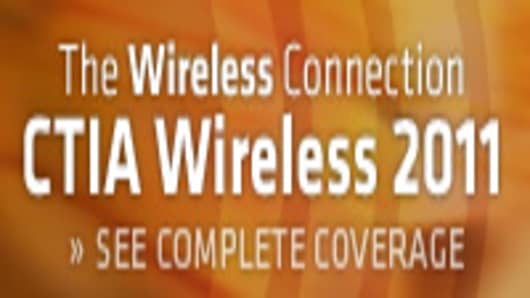Everyday across the U.S., tens of thousands of patients in the Veterans Administration health system start their day by answering questions about how they feel.
But they aren't meeting with a doctor or a nurse — or even talking to them on the phone. Instead they are pressing buttons on an alarm clock-size device called a Health Buddy.
Some of the patients will connect a weight scale or a blood pressure cuff to the device, which transmits the information to a VA database where it is analyzed for warning signs of impending health problems.
The VA's 49,000-patient network is part of a quiet revolution in health care dubbed "telemedicine," aimed at improving care and lowering costs by keeping patients out of hospitals and nursing homes.
The cost of monitoring a VA patient at home is $1,900 per year, compared with $77,000 for nursing home care, according to the government agency.
"People are living longer, staying healthier and prefer to stay in their own homes, so the VA has been focusing on providing other options to nursing home care," said Dr. Adam Darkins, chief consultant for the VA care program.
Some patients will inevitably need nursing home care, Darkins says, but remote monitoring is a good option for those who are still able to function on their own.
Most of the patients in the VA program have chronic diseases like diabetes, heart disease and depression. But Darkins also gives the example of one veteran who was diagnosed with cancer and was still able to travel the country with his wife using the VA's mobile health network.
With health care costs consuming nearly a fifth of the economy, devices like the Health Buddy offer one way to manage the wave of Baby Boomers who will require more and more medical care as they age. Telemedicine has been endorsed by doctors and care takers who believe seniors fare better at home, amid familiar routines and surroundings.
Telemedicine has attracted major investments from some of the nation's largest companies over the past year. Last summer, General Electric and Intel launched a joint venture focused on home health care, including a device that enables video conferencing between doctors and patients and a motion sensor system that tracks senior's movements and sends an alert if they fall.
"I think 'home care' is actually an antiquated term, because people with chronic conditions don't have to stay at home anymore. The technology has become so much cheaper and more available that it goes wherever the person does."
Verizon announced last April it would partner with telemedicine developer BL Healthcare on a wireless health care platform. In October, AT&T said it would begin offering WellDoc's mobile health applications, including diabetes management, to its employees.
The market for telemedicine hardware has grown to an estimated $125 million, according to research firm InMedica. The sector encompasses everything from self-dispensing pill boxes — designed to prevent medication errors — to smart phone applications that help diabetics manage their blood sugar levels.
The tricky part is finding a way to pay for telemedicine which doesn't fit into the traditional U.S. health care model centered around visits to the hospital and the doctor's office.
"We are at the top of the hype cycle right now, with everybody talking about how wonderful this will be," said Jonathan Linkous, president of the American Telemedicine Association. "But it won't be anywhere near what people are talking about unless it's integrated within the health care delivery system."
Even doctors at tech savvy medical practices point out the technological and economic hurdles.
Greenhouse Internists is a seven-doctor practice serving 10,000 patients in Philadelphia. The group adopted electronic health records in 2004 and has continued upgrading its technology through state and federal grants. But the practice's computer system cannot communicate with the wide range of handheld devices used by patients. On top of that, most insurers won't reimburse doctors and nurses for time spent monitoring patients remotely.
"Nobody has figured out a business model to fund this stuff within the standard health insurance system," said Dr. Richard Baron, the group's chief executive.
In part that's because technology that keeps patients at home undermines the economics of the typical medical practice.
A 2005 study conducted by Tufts Medical Center showed that monitoring heart failure patients remotely reduced hospitalizations by 72 percent — which also slashed the hospital's earnings.
But you need not wait until hospitals reinvent the health care business to benefit from telemedicine. There are already roughly 17,000 health-related applications for the iPhone, Android and other smart phones. Many cost as little as a dollar and are available without a prescription.
These applications perform relatively simple tasks, such as helping diabetics choose appropriate foods. But American Telemedicine Association's Linkous says they represent the future of the industry.
"I think 'home care' is actually an antiquated term, because people with chronic conditions don't have to stay at home anymore. The technology has become so much cheaper and more available that it goes wherever the person does.
Watch CNBC's coverage of the 2011 CTIA Wireless convention on Tuesday, March 22 and Wednesday, March 23 from Orlando, Fla. Technology correspondent Jon Fortt will report live from the convention floor, Jim Cramer will host a special edition of "Mad Money" on Tuesday at 6pm ET, and Michelle Caruso-Cabrera will co-anchor "Power Lunch" from the event on Wednesday at 1pm ET.



